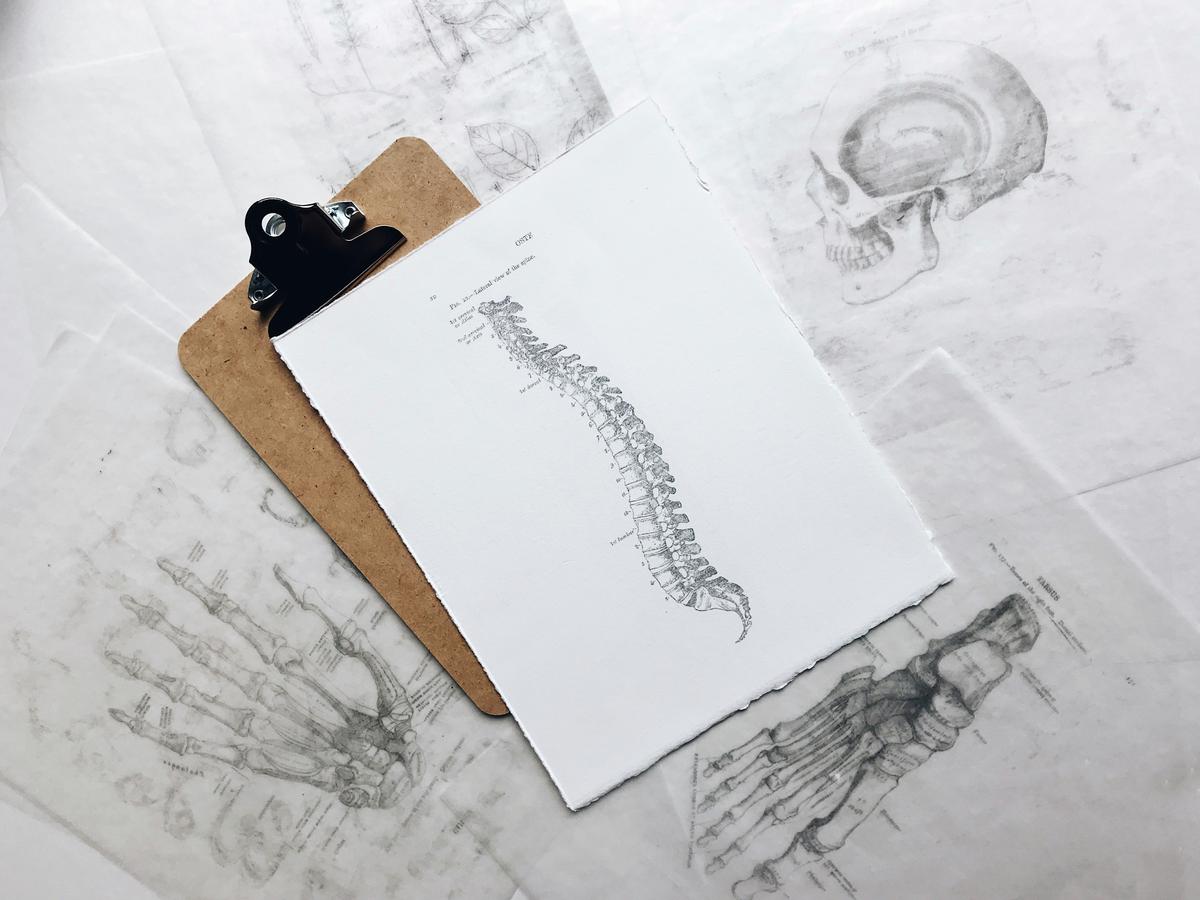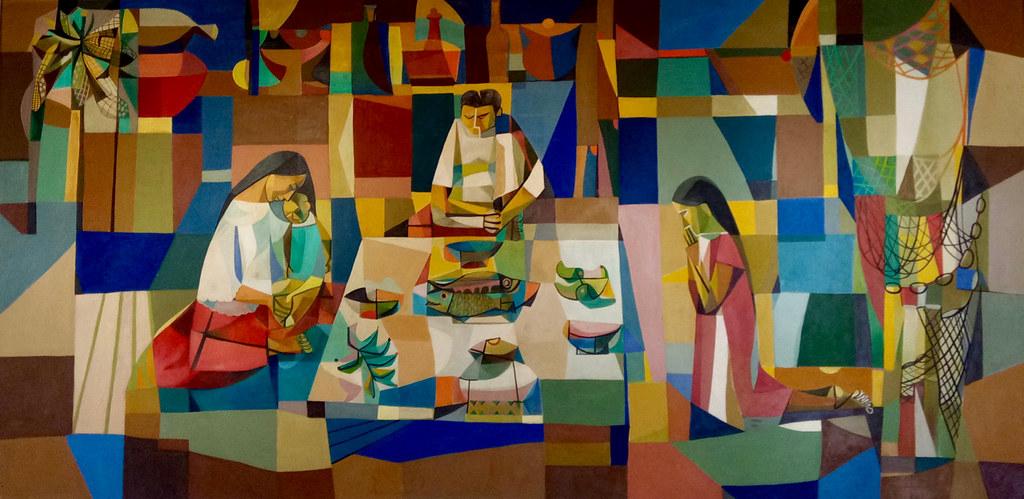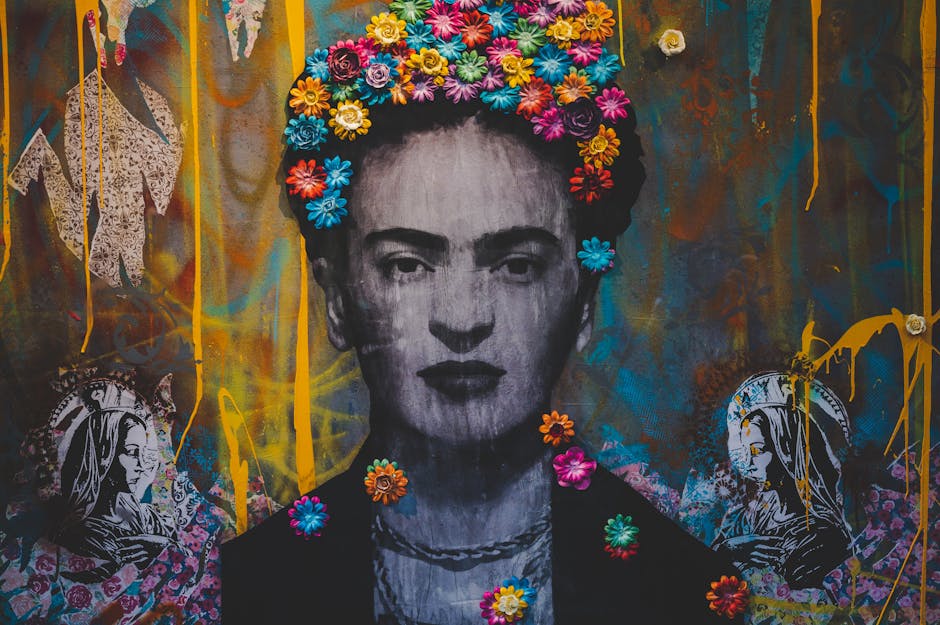Leonardo da Vinci's Multifaceted Genius
Leonardo da Vinci's work as a painter alone places him prominently in the annals of artistic pioneers, yet he intruded into the worlds of science and invention with equal fervor. His iconic "Mona Lisa," housed at the Louvre, mesmerizes countless visitors with its enigmatic smile—a window into Leonardo's fascination with human emotion and subtle intricacies encoded in the portrait's gaze.
The breadth of his ingenuity is perhaps most vividly captured in his voluminous collection of sketches, particularly in the fields of human anatomy and machines. Da Vinci dissected the corporeal body with precision long before full understanding came into the medical narrative.1 These sketches demonstrated a connection between muscle structure and bodily motions—details far advanced for a world then entangled in alchemic mysticism.
Similarly revolutionary were his visionary inventions predicated upon observations of the natural world. Flyable machines nestled in da Vinci's manuscripts speak to his unquenchable zest for elevating human capabilities. He foresaw machines of flight and warfare, trailing centuries beyond the steam-powered realms into an age where mechanics gripped the potential of flight and speed.
Yet, Leonardo never saw these spring forth beyond paper—a conjurer whose spells were bound in sketches. His concepts of parachute and helicopter materialized long after their creator had departed, hinting at an intermingling of intellect and prophecy.2 While modern eyes benefit from seeing these marvels in fleshed-out form, da Vinci worked solely in theory and minimal trials, bounded by the limitations of his epoch.
Da Vinci's multifaceted genius flooded into every channel of creative and empirical thought he engaged with. He painted not just with colors but with visions, each stroke embedding a future yet to unfold—a continuity of Renaissance innovation sculpting tomorrow. Leonardo da Vinci remains a beacon projecting the pathway from the Renaissance's brilliance, heralding an era where understanding was boundless and tethered to the curious will of the observer. His legacy is a reminder that the boundaries of today lay the foundations for the landscape of tomorrow.

Photo by moonshadowpress on Unsplash
Vincent van Gogh's Emotional Impact Through Art
Vincent van Gogh's contribution to art is marked by his emotive intensity, personified in works like 'The Starry Night.' Through such paintings, van Gogh shifted how emotional expression could be visualized within modern art. The vigor with which he pursued the translation of emotion onto canvas paved paths for the expressionist movements that followed.
'The Starry Night' harnesses swathing turns of the brush to encapsulate a vibrant tumult of feelings—a visual symphony composed of blues and yellows that swirl over the sleepy village of Saint-Rémy. This piece serves as an exploration into the depths of despair, rumination, and hope.
Van Gogh's choice of a dreamlike, almost surreal color palette diverges from typical representations of the natural world. This choice seems to transmit his internal religious conflicts and his contemplation of existence. The swirling sky calls forth a palpable movement that seems almost audible, a symphonic play brushing against the oppression of the dark. Van Gogh leverages the potency of complementary colors, with vibrant blues and intense yellows enhancing the visual resonance, tugging at the viewer's emotive heartstrings.3
Van Gogh's dynamic, gestural application of paint articulates a palpable psychic and emotional thrill. His technique, characterized by thick, impulsive brushstrokes, conveys his sense of urgency and need for immediate expression, injecting kinetic life into static depictions. This approach indicates an aesthetic attraction to texture and movement that compels the observer into deeper engagement with the painting's emotional landscape.
Despite the depths in his artworks, van Gogh's personal torment, reflected in erratic and self-destructive behavior, often overlays public perception of his talent. His paintings, permeating melancholy with bursts of light, became conduits for viewing mental health—a lens into an artist's tortured soul perceived in hues that dance between hope and despair.
Van Gogh's legacy within modern art registers on an emotional frequency unmatched by his contemporaries. A painter of deep passions, veiled sorrows, and fleeting delights, he marks the canvas of modern art with the palpable pulse of human experience, inviting onlookers to bear witness to a spectrum of embodied emotion that resonates long after the artist's lifetime.
Pablo Picasso and the Birth of Cubism
Pablo Picasso's audacious journey into the abstraction of geometric forms led to the creation of Cubism, a strain of modernism that fragmented the conventional rules governing art's form and content. His masterpiece, 'Les Demoiselles d'Avignon', marks a seismic disruption in visual representation and lays the philosophical and aesthetic bedrock of Cubism.
Painted in 1907, this avant-garde work depicts five dissonant prostitutes, each figure constructed from sharp geometric shards, the faces inspired by Iberian sculpture and African masks. Their menacing and primitive gaze usurps the traditional European portrayal of female nudity and beauty with a powerful, unsettling presence. The women's bodies are angular and disjointed, capturing multiple perspectives within a single frame. This marks a bold reconsideration of dimension, perspective, and form, thrusting narrative coherence aside, leaving raw, unbridled expression in its stead.
Picasso's development of this radical artistic language arose amongst conversations with fellow artist Georges Braque, and together, these dialogues forged the syntactic structures of Cubism.4 This new visual dialect dissected and reassembled objects using multi-dimensional viewpoints—eschewing fixed perspective and changing how reality could be depicted on a flat canvas.
In the canvas's flat, neutral palette juxtaposed with intruding, sharp lines of the figures, Picasso challenged the viewer's eye to reconceptualize form and depth within the stripped-back colors that allow harsh geometries to speak loudest. 'Les Demoiselles d'Avignon' dips into the tribal and embraces the unknown, steering the cultural zeitgeist away from the polished veneers of the Renaissance and toward the abstracted depths of the modern psyche.
The birth of Cubism heralded by this audacious masterpiece was revolutionary. It spun a new yarn for modern art, unraveling linear perspective that had been tightly wound since the Renaissance. Picasso's artwork dislocated traditional views on how the world could be represented—aesthetic impacts that mirrored the seismic shifts occurring across 20th-century thought, including psychology, philosophy, and physics.
Picasso's influence permeates deeply not just within art's domains but also into the broader canvases of society—challenging, inspiring, and perpetually inviting reinterpretation. It fundamentally altered how artists perceived their subjects and their craft, birthing not just a style but a critical lens through which the world could be differently understood. Through Picasso's Cubist lens, we continue to encounter fresh perspectives—a testament to his lasting legacy that always encourages a deeper gaze into the maze of lines and colors that reveal the complex facets of human perception.

Claude Monet and the Impressionist Movement
Claude Monet's work represents a pivotal turn in the development of art, marking the vivid inception of the Impressionist movement that foregrounded the portrayal of light and color over literal subject matter. This is evident in Monet's masterpiece 'Impression, Sunrise', the painting from which Impressionism receives its namesake. With this artwork, showcased in 1874 during the first independent art show of the Impressionists, Monet introduced the world to a genre that championed a novel artistic perspective geared toward capturing fleeting moments of light in everyday scenes.
Monet's technique of loose brushwork allowed for a quick capture of the essence of the subject. This approach displayed an abandonment of the detail to which traditional artworks adhered, relying instead on bold strokes and color juxtapositions to evoke mood and atmosphere. The portrayal in 'Impression, Sunrise' effectively encapsulates Monet's innovative use of color to mimic the morning's diffuse light casting over Le Havre's harbor, enveloping the scene in a misty vividity. This method generated a dynamic interaction between the viewer and the painting, transforming every glance into a uniquely personal experience as individual perceptions of light and color take precedence in interpreting the art.
Monet's habitual return to specific motifs under varying light and weather conditions elicited a solid rendition of the transient states of nature. His series of paintings featuring haystacks, cathedrals, and notably, the lily ponds at his home in Giverny, accentuate this exploration with recurring visual themes considered through different temporal lenses.5 This repetitive dive into familiar subjects allows for a deep meditation on the impact of light, cementing Monet's impact on art by embedding a perpetual curiosity about the nature of vision and sensation.
Monet's devotion to capturing ephemeral moments without premeditation spoke to broader societal shifts in the nineteenth century. The rapid industrial progress expedited alterations in cityscapes and landscapes, paralleling Monet's artistic movement highlighting the fleeting qualities of light and atmosphere rather than static historical accounts depicted in traditional art. This correlation endows Monet's approach with a philosophical depth; his implementation of fragmented color and light captures not only the visual but also the temporal, evoking a sense of progressive dynamism that was symmetrical to the pulsing change inherent to contemporary life.
Claude Monet and his fellow Impressionists challenged conventional parameters not only in terms of technique but equally via their approach to art showcases, distancing themselves from the academia-centered Salon that dominated French art, thus establishing a defiance that expanded artistic freedom for subsequent generations. This model encouraged a revitalization in art whereby the societal and communal contexts of art were reconsidered and broadened. Widely regarded as foundational for modern figurative and even abstract art movements, Impressionism under Monet shifted art from its didactic origins to an exploration into personal and perhaps universal truths revealed within the nuances of sensory experiences.
Monet's masterful technique and persistence with subject matter under variable conditions did more than create inspiring artworks; it shifted the nature of art itself. His works stimulated an engagement with 'moment' and environment which redefined realism into a personal encounter with the world, making profound implications on the trajectory of modern and post-modern art—an unmitigated call to observe the world ever renewably through the prism of individual experience.
Frida Kahlo's Fusion of Personal Trauma and Cultural Identity
Frida Kahlo's art was a powerful expression of her personal experiences and Mexico's cultural heritage. Her self-portraits depicted her physical and emotional tribulations following a life-altering accident and tumultuous marriage to artist Diego Rivera. Kahlo's works resonated deeply within the art world and beyond, becoming emblems of human endurance and defiance.
Kahlo's use of symbolism in her self-portraits was vivid, blending native iconography and mythology with personal elements to reflect her complex personality and insights. In 'The Two Fridas' (1939), she illustrates a dichotomous identity, grappling with colonial history and postcolonial reality. Through her art, Kahlo launched dialogues of decolonization and identity politics.
In 'The Broken Column' (1944), Kahlo's spine is replaced by an Ionic column on the brink of shattering, capturing her anguish under a brave front. The nails scattered across her face and body invoke Christian martyrdom and portray the ceaseless sting of pain. Kahlo's self-portraits evolved into powerful gestures of revival and self-recognition, reconfiguring her limitations into articulations of identity.
Kahlo's engagement with cultural elements roots her narrative in the rich soils of Mexican cultural personae, creating overlapping layers infused with kaleidoscopic intensity that bolsters her artistic authenticity. Her oeuvre remains vital in discussions around feminism, disability, and multicultural identity within art histories, serving as testaments to her life and enduring spirits universally.
Kahlo's work unveils a dance between despair and bold defiance, creating portals into grappling existence that continue to inspire and provoke, reminding us that even amidst adversities, there exists the promise of empowerment and identity salvation.

Andy Warhol's Influence on Pop Art and Cultural Iconography
Andy Warhol's innovative techniques and exploration of the connections between art, celebrity culture, and consumerism made him a pivotal figure in art history. His use of media and popular culture icons brought a new perspective to what art could encompass.
Warhol's Campbell's Soup Cans series epitomized his philosophy and fascination with mass production. By depicting everyday consumer goods as worthy subjects for art, he blurred the lines between 'high' art and commercial aesthetics. His adoption of silkscreen printing, traditionally used for commercial purposes, allowed him to reproduce images repeatedly, mirroring the mass production processes he depicted.
Warhol's iconic portraits of Marilyn Monroe explored the symbiosis between celebrity culture and material consumerism. The repetition of Monroe's image commented on her ubiquitous media presence and the disposability of celebrity personas. Like his soup cans, Warhol's Monroe series highlighted the themes of ubiquity and repetition, underscoring the manufactured nature of celebrity identity.
Beyond the canvas, Warhol's involvement in film, photography, and music synthesized with his artistic philosophy, pushing the boundaries of art into the public consciousness. His work captured the growing power of popular media and critiqued its pervasive influence on public perception and taste.
Warhol reshaped the landscape of how art interacts with its audience and subjects, highlighting the interplay between cultural symbols, media portrayal, and consumer response. His vision tapped into fundamental changes in culture that continue to resonate, marrying commercial techniques with serious artistic inquiry. Warhol not only described pop culture but changed it forever, guiding how generations understand the complexities of symbol, icon, and commodity in the everyday world.
The profound impact of Frida Kahlo and Andy Warhol extends beyond the confines of galleries and museums. Their works continue to engage, challenge, and inspire audiences, connecting deeply with the human spirit across time and space. The legacy of these artists lies not only in the beauty and intrigue of their creations but also in their ability to evoke emotion, provoke thought, and shape our understanding of art, culture, and identity.
Consider the following key aspects of their enduring influence:
- Emotional resonance: Both Kahlo and Warhol's works tap into universal human experiences, such as pain, love, and the search for identity, allowing viewers to form deep emotional connections with their art.
- Cultural commentary: Their art serves as a powerful commentary on the societies in which they lived, addressing issues of consumerism, celebrity culture, and the complex interplay between personal and collective identities.
- Breaking boundaries: Kahlo and Warhol challenged traditional notions of what constitutes art, expanding the boundaries of artistic expression and paving the way for future generations of artists to explore new mediums and styles.
The timeless appeal of Frida Kahlo and Andy Warhol's works is a testament to their genius and the universality of their themes. As long as people continue to grapple with questions of identity, culture, and the human condition, these artists will remain relevant and influential, their works serving as a source of inspiration, comfort, and reflection for generations to come.




















